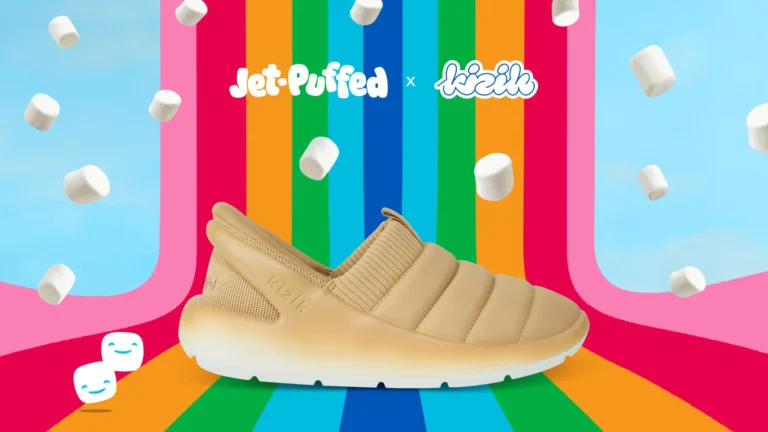Sweet Hearts: The Allure of Chocolate and the Two-Sided Nature of Love (Valentine’s Day Edition)
Valentine’s Day…the love holiday…the holiday in which we enjoy time with our romantic partners and lavish them with gifts and attention. Roses are of course a mainstay of the day, as are greeting cards and little candies with messages on them. “Roses are red, violets are blue…” But, as far as Valentine’s Day goes, let’s not forget the biggest elephant in Cupid’s room…the great lover for whom we all swoon over every mid-February—chocolate! Chocolate…it’s so terrible for us in large amounts and yet it is so irresistible. Why? What is it about this special sugary substance that we love so much? As we always do…let’s figure out by looking at its history.

The Cacao Bean and Central/South America
Chocolate, made from cacao tree fruits, originated in Central and South America. The cacao fruits are called pods, each of which contains around 40 cacao beans1. Gatherers dry and roast cacao beans to create cocoa beans1.
According to Cultural Arts Curator for the Smithsonian’s National Museum of the American Indian, Hayes Lavis, ancient Olmec pots and vessels from around 1500 B.C.E. contain traces of the stimulant theobromine found in both chocolate and tea1. At some archaeological sites, white pulp around the cocoa beans that was likely used as a source of fermentable sugars for alcoholic drinks was also identified2. The Olmecs probably imbibed cacao as a ceremonial beverage1.
The Mayans gathered chocolate knowledge from the Olmecs and not only consumed but revered chocolate1. Their written history mentions chocolate’s use in various celebrations and as a product used to finalize important transactions and ceremonies1. Chocolate wasn’t just a product of the wealthy class, though1. Many regular Mayan households enjoyed it with every meal, combining the thick and frothy substance with chili peppers, allspice, vanilla, water, or honey1.
The Aztecs in turn revered chocolate (“xocolatl”) to an even greater degree…believing that the gods gave it to them, and that it was even more precious than gold1. According to one legend, the other gods banished the divinity Quetzalcoatl for sharing chocolate with humans3. The Aztecs loved the caffeinated kick that hot or cold, spiced chocolate beverages in ornate containers provided them, and they used cacao beans as currency to purchase food and other goods1.
While mainly an upper-class extravagance for the Aztecs, the lower classes did occasionally enjoy chocolate at weddings and other celebrations1. The notorious Aztec ruler Montezuma II allegedly drank gallons of chocolate as an aphrodisiac and a source of energy and reserved some of his cacao beans for his military1.
The Cocoa Bean and Europe
Of the conflicting reports, one alleges that chocolate arrived in Europe by way of Spain, and one story has it that, in 1502, Christopher Columbus discovered cacao beans by intercepting a trade ship on its way to America1. Another tale states that the Aztecs of Montezuma’s court introduced Hernan Cortes and his Spanish conquistadors to chocolate1. Cortes in turn kept his chocolate knowledge a well-guarded secret when he returned to Spain1. A third story holds that friars presenting Guatemalan Mayans to Philip II of Spain in 1544 brought cacao beans back as a gift1.
By the late 1500s, the Spanish Court greatly enjoyed chocolate as a culinary indulgence, and so they began importing it in 15851. Other European countries such as Italy and France visited parts of Central America, learned about cacao beans, and brought chocolate back to their own respective countries as well1.
Europeans went nuts for chocolate. Demand skyrocketed, and chocolate plantations in the Americas used thousands of enslaved laborers to harvest and transport the product1. Europeans developed their own varieties of hot chocolate with cinnamon, cane sugar, and other common flavorings and spices1. Chocolate arrived via Spanish ships to Florida in 1641, and the first American chocolate house may have opened in Boston in 16821. Cocoa beans became a major American colonial import, and all classes of people enjoyed it1. Chocolate was used as a military ration during both the American Revolution and World War II1.
Making Chocolate
In 1828, Dutch chemist Coenraad van Houten discovered a way to treat cacao beans with alkaline salts, making powdered chocolate that was easier to mix with water1. In addition to the aforementioned “Dutch processing,” van Houten also supposedly invented the cocoa press1. The cocoa press separated cocoa butter from roasted cocoa beans and easily/inexpensively produced cocoa powder1.

In 1847, British chocolatier J.S. Fry and Sons created the first chocolate bar molded from a paste of cocoa butter, chocolate liquor, and sugar1. Swiss chocolatier Daniel Peter added dry milk to chocolate to create milk chocolate (1876)1. With the help of his friend Henri Nestlé, the two created the mass-marketing Nestlé Company1. Other innovators included Rudolf Lindt, who invented the conching machine, and American chocolatier Milton S. Hershey, who purchased chocolate processing equipment at Chicago’s 1893 World Columbian Exposition and began a career developing chocolate-coated caramels. Mars and Cadbury (the latter of which produced chocolate Easter eggs) also soon joined the mass-marketing world.
The Ingredients
Chocolate contains all sorts of polyphenols (especially catechins) and smaller amounts of flavonoids4,5. Alkaloids and caffeine also comprise it6. One hundred grams of milk chocolate alone can supply a person 540 calories (an approximate 59% of which is carbohydrates in the form of sugar and dietary fiber, 30% of which is fat, and 8% of which is protein). Approximately 65% of the fat in milk chocolate is saturated (mainly palmitic and stearic acid), while oleic acid is milk chocolate’s predominately unsaturated form of fat. 100-grams of milk chocolate also packs in a hefty source of riboflavin, vitamin B12, dietary minerals, manganese, phosphorus, zinc, calcium, magnesium, and iron.
Valentine’s Day and the Two-Sided Nature of Love
Today, chocolate can be enjoyed in numerous ways. We eat chocolate bars, scoop out chocolate ice cream, slice up chocolate cake and bake chocolate chip cookies. Hot chocolate is one of the most popular winter-time beverages, and kids of course love chocolate milk! Every Valentine’s Day, chocolate becomes its own special love language…gift-wrapped in a heart-shaped container. We symbolize love by way of chocolate…the sweet taste and the warm fuzzy feeling. That’s why we love it so much!
We can picture the scene all too well…a low-lit room…candles…rose petals…intimate apparel…and, yes, chocolate! So sexy…so passionate…so emotionally charged. Love fuels intimacy which in turn keeps the wheels of life spinning. Candles, wine, and chocolate only accentuate that. But, annoyingly, like the Greek god Dionysus, the whole tableau hinges upon a double-edged sword of “ecstasy and terror.”
Candles can burn a house or a forest or an entire city to the ground if left to their own devices. Unsafe intimacy can spread diseases and all other sorts of miseries. Red wine can poison and kill people if consumed in excess. And chocolate…well, I greatly wish that there was no darker side to this literally dark substance, but alas…diabetes, high blood pressure, and the like.
Can we get a break? One source of warmth and love and mirth that isn’t conditionally dangerous and destructive?! Unfortunately, no. But, for the sake of this article, let’s temporarily believe—at least because of the sweet tooth so many of us have– that chocolate is that one source. And, with that…Happy Valentine’s Day!
SOURCES
- https://www.history.com/topics/ancient-americas/history-of-chocolate
- “New Chemical Analyses Take Back 500 Years and Reveal that the Impetus for Cacao Cultivation was an Alcoholic Beverage”. Penn Museum. 2007. Archived from the original on 2 December 2007. Retrieved 13 November 2007.
- “History of Chocolate”. Field Museum. Archived from the original on 5 February 2016. Retrieved 3 March 2014.
- Zięba K, Makarewicz-Wujec M, Kozłowska-Wojciechowska (2019). “Cardioprotective mechanisms of cocoa”. Journal of the American College of Nutrition. 38 (6): 564–575.
- Miller, K. B.; Hurst, W. J.; Payne, M. J.; et al. (2008). “Impact of Alkalization on the Antioxidant and Flavanol Content of Commercial Cocoa Powders”. Journal of Agricultural and Food Chemistry. 56 (18): 8527–33, 8527
- “Caffeine”. New South Wales Government. Archived from the original on 24 September 2015. Retrieved 8 September 2015.
Discover more from DG Speaks
Subscribe to get the latest posts sent to your email.




